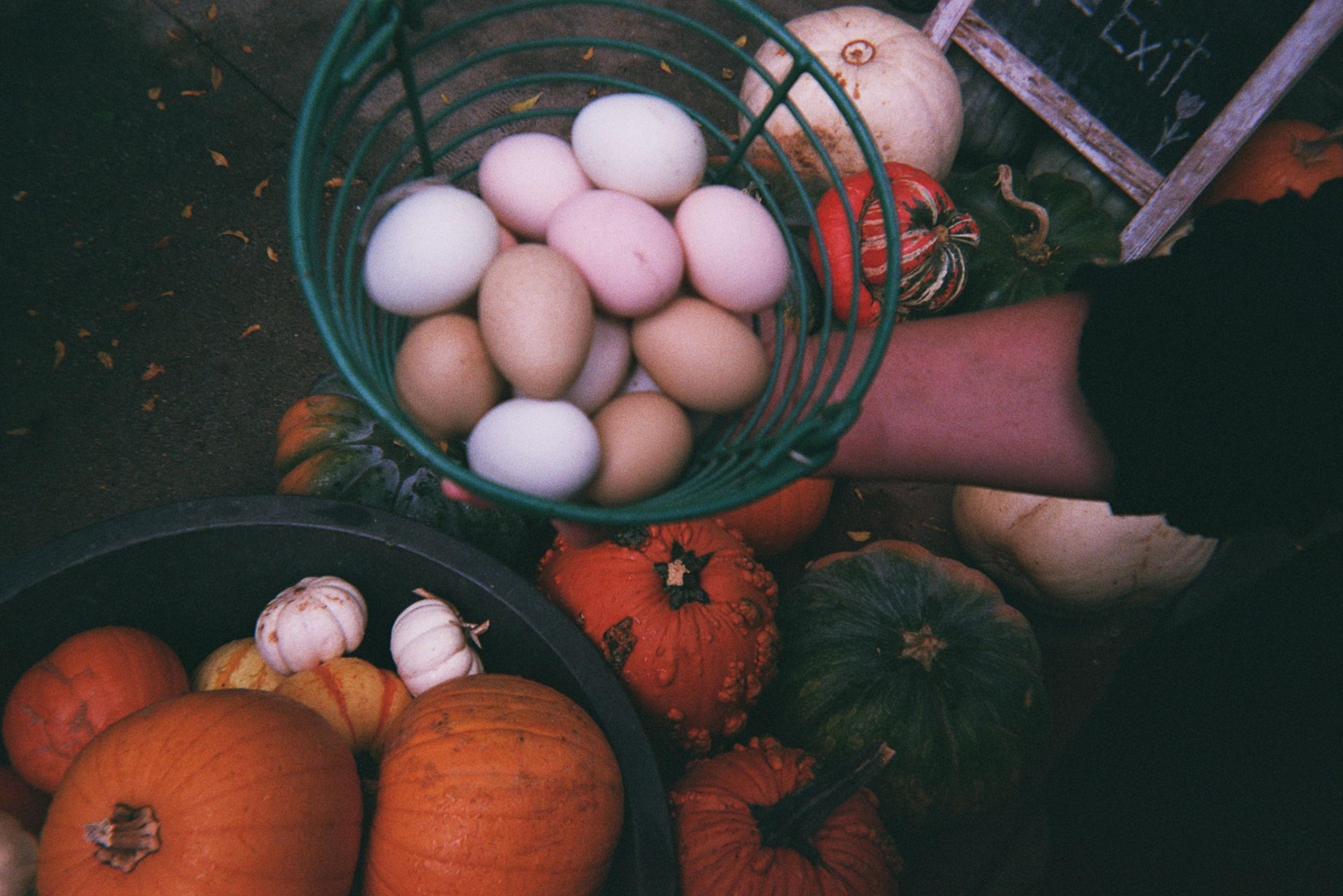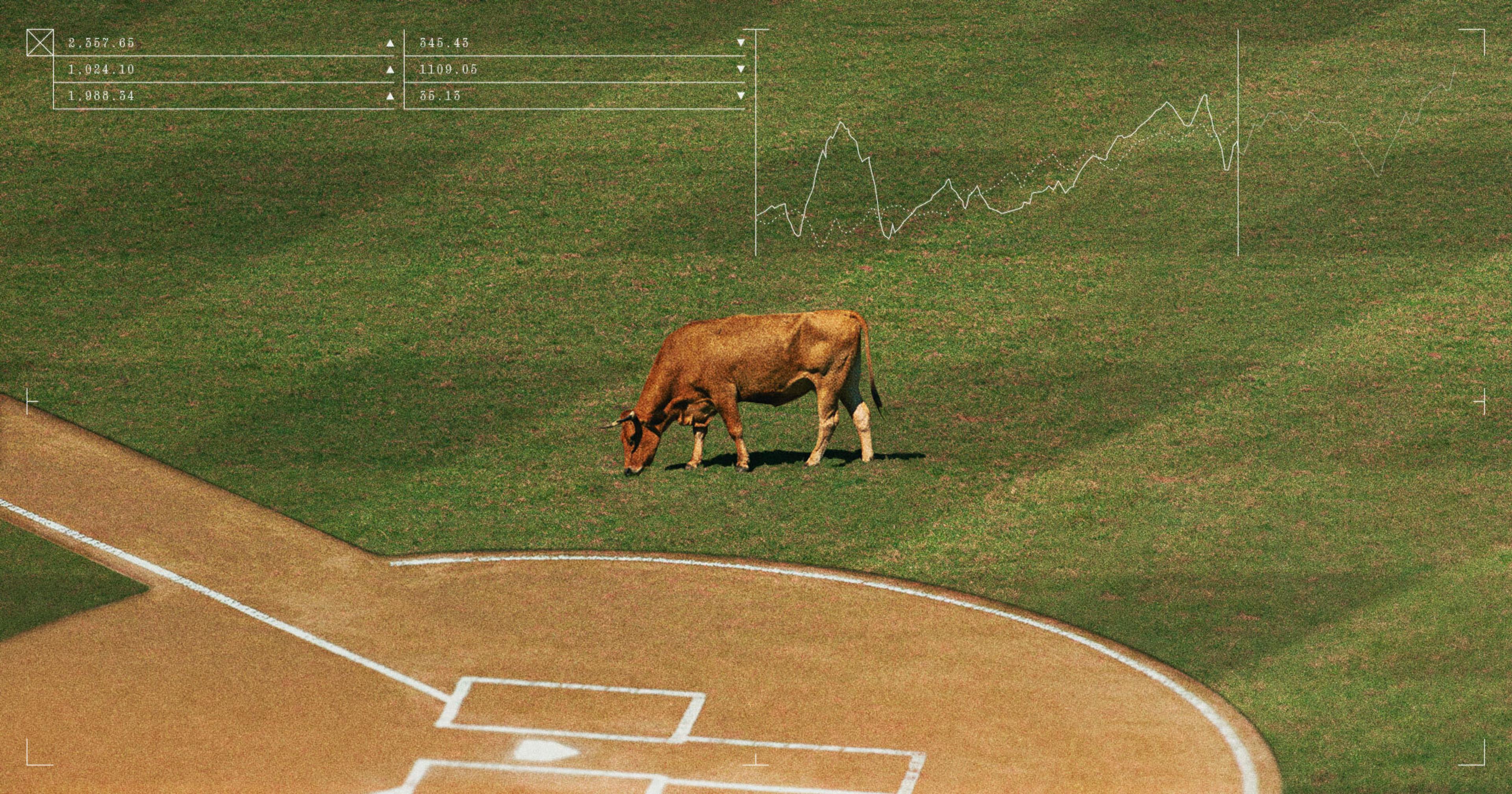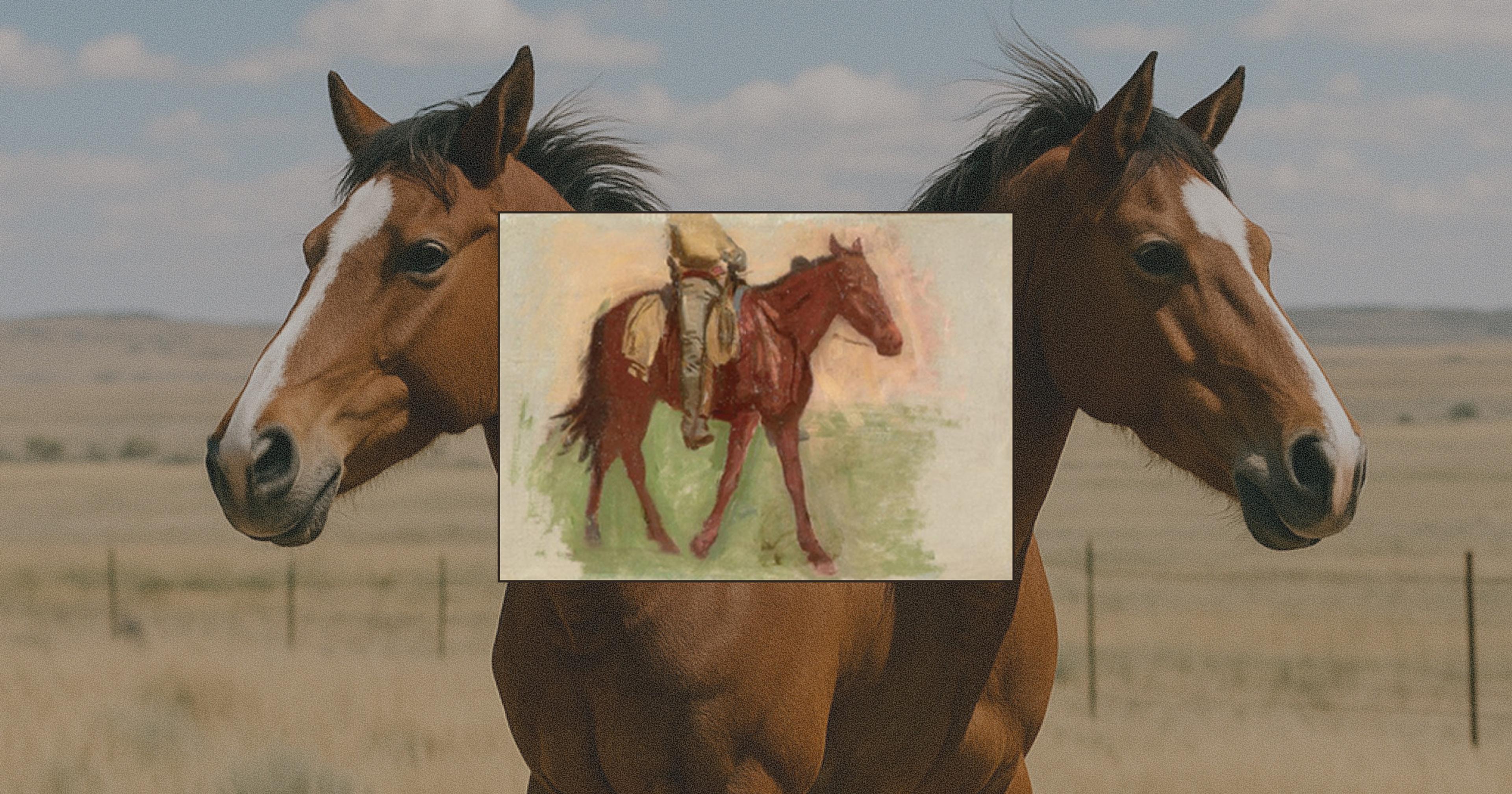With a little help from Ambrook, the Urban Homestead was able to continue to feed its community.
Anais, Justin, and Jordanne Dervaes run the Urban Homestead in the mold of their father, Jules. He taught them to build up their community through the empowerment that comes from growing one’s own food. Nestled on a quiet city block in Pasadena, California, the Urban Homestead grows a diverse set of crops, from salad greens and gourds to edible flowers and tropical fruits. When the coronavirus pandemic slowed things down for the Dervaes family, they discovered Ambrook, which helped them get crucial funding from the USDA. The Ambrook team visited the Urban Homestead in 2021 to learn more about their farm, and how they do so much on a small patch of land.
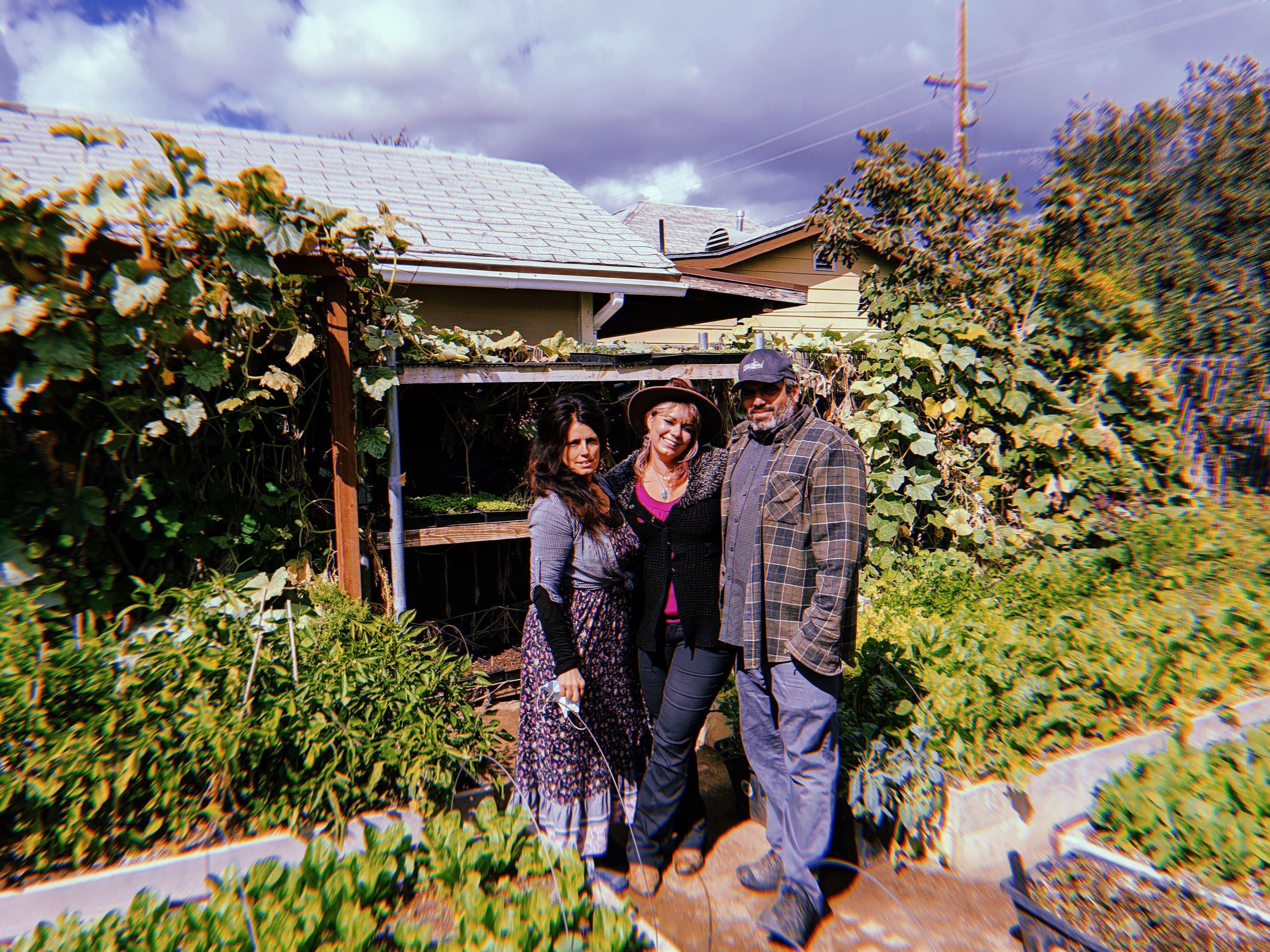
The Urban Homestead is a local gem in Pasadena, drawing customers from across Los Angeles. Local families visit for sustainable produce, and the city’s most discerning restaurants and caterers know it as the place to source high-quality edible flowers and herbs. If that wasn’t enough, the Dervaes siblings teach classes about regenerative farming, distribute produce from farms further out from the city, and manage a flock of helpful livestock that contribute to the health of their soil.
“If an acre is a dollar, we’re growing on 10 cents.”
How much land does it take to do all that? As Anais puts it, “If an acre is a dollar, we’re growing on 10 cents.”
Anais shares this favorite analogy with us as she welcomes us to the operation’s front garden, home to edible flowers, herbs, fruits, and vines. This impressive farm manages to fulfill all of its functions, including housing the Dervaes family, on only 1/10th of an acre.
How do they do it? A visionary devotion to innovation and efficiency through regenerative practices that recirculate resources and transform limitations into opportunities. For instance, the Urban Homestead’s growing space extends all the way to the walls of the house. Conventional wisdom would advise against that proximity because water runoff can threaten a house’s foundation, but the Dervaes family can use that space because they irrigate with unglazed clay pots called ollas that effectively eliminate runoff. With methods like these, the Urban Homestead produces about 7,000 pounds of produce each year.
Although the Dervaes’s father, Jules, had been homesteading on the property since 1985, it was the edible flowers in the front garden that led the family to start selling their produce.
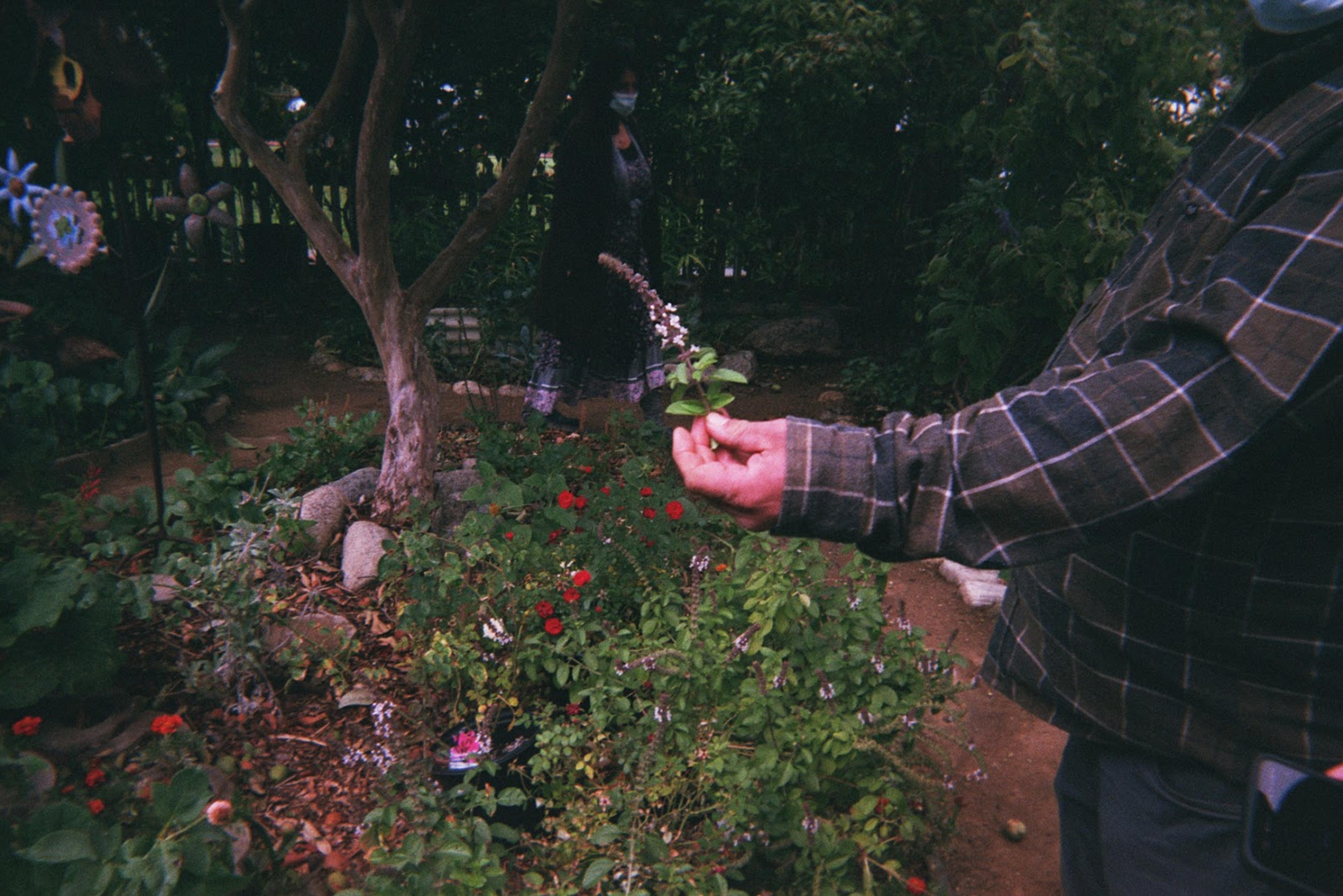
Anais recalls the moment it began: “In 1992, we read in the newspaper that one of the tea shops was using cute little pansies and nasturtiums to plate their tea, and we looked into the front yard and said, ‘So people make money off that?’ And that was the start of the business.” They acquired early customers just by dropping samples of their flowers off at restaurants with her contact information. Anais recalls fondly an instance where she wasn’t even able to make it back home before the chef called her asking where the flowers had come from and where he could order more. The modest plot of edible plants now frequently graces plates across the region, from high-end Pasadena restaurants to dinner service at the Academy Awards.
“We looked into the front yard and said, ‘So people make money off that?’ And that was the start of the business.”
On the day we visited, the front plot was planted with ever-popular orange nasturtiums, piebald Christmas lima beans, small green guavas, pink dragonfruit, and the mouth-numbing toothache plant—an adventurous addition to avant-garde cocktails. But Justin tells us that on 1/10th of an acre each plant must earn its keep to stick around — he’ll pull up a plant that has gone out of fashion and grow whatever clients are asking for in its place. This year, an LA-based vodka company asked them for rose petals and hibiscus flowers which now grow abundantly on the corner of the Dervaes’s house in the middle of the homestead.
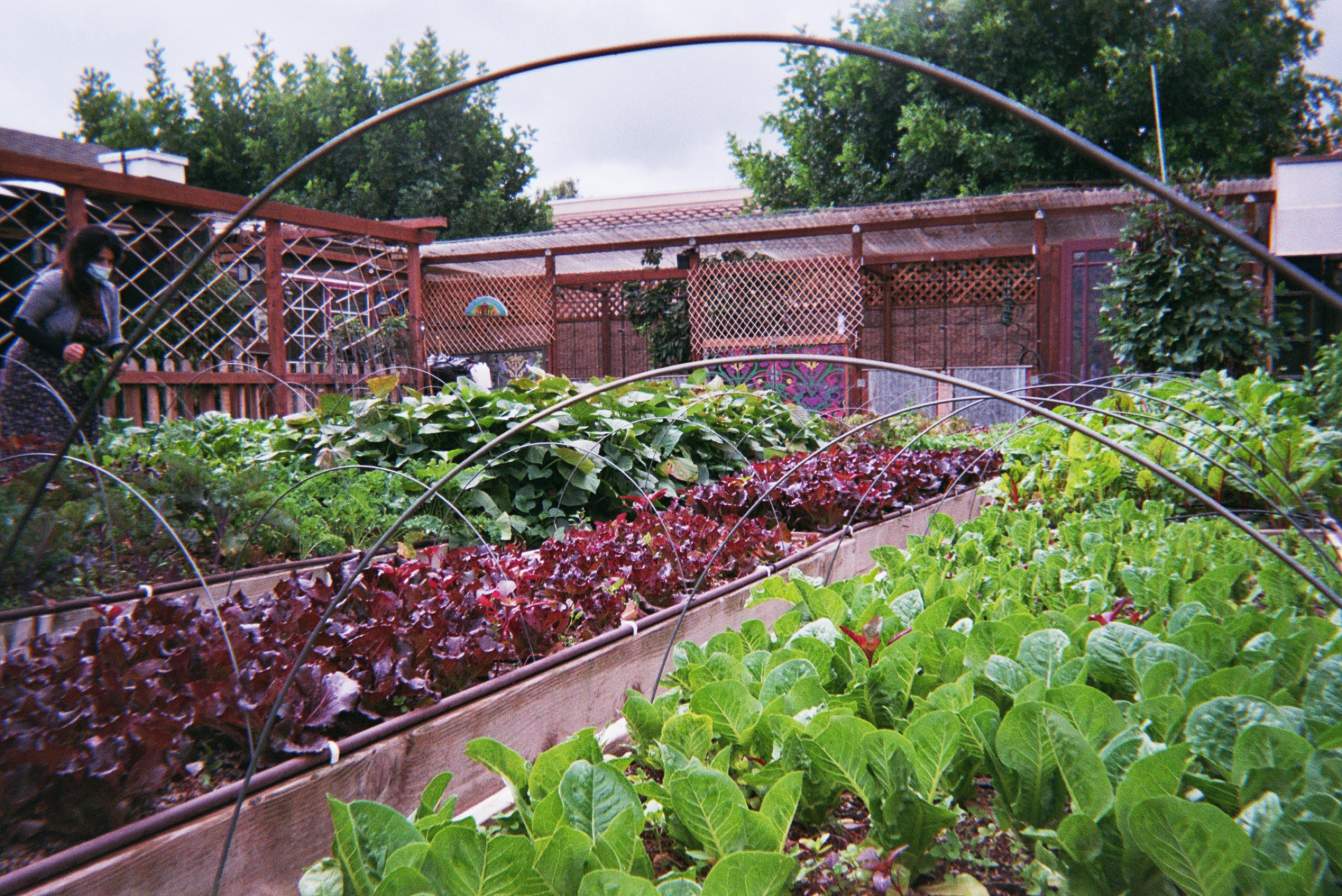
Around the back of the house, the Urban Homestead’s ingenious use of space continues to impress. Four rows of raised beds filled with leafy greens are packed into the center of the yard, Italian gourds hang from a long trellis that hugs the fenceline, and a shady pen abutting the back fence is home to the farm’s animal composters — chickens, ducks and bees.
“We have been rebuilding the soil for so long, the fence line is no longer 6 feet high. We’re moving up in the world! Literally!”
The produce from the backyard fulfills orders for the farm’s CSA (Community Supported Agriculture) and standalone salad mix sales. It also serves as a living educational tool for its non-profit activities that aim to spread knowledge about regenerative farming. The Dervaes conservation practices and care of the homestead have greatly rewarded them with rich and fertile soil. Justin points to the buried fence posts as he jokes, “We have been rebuilding the soil for so long, the fence line is no longer 6 feet high. We’re moving up in the world! Literally!”
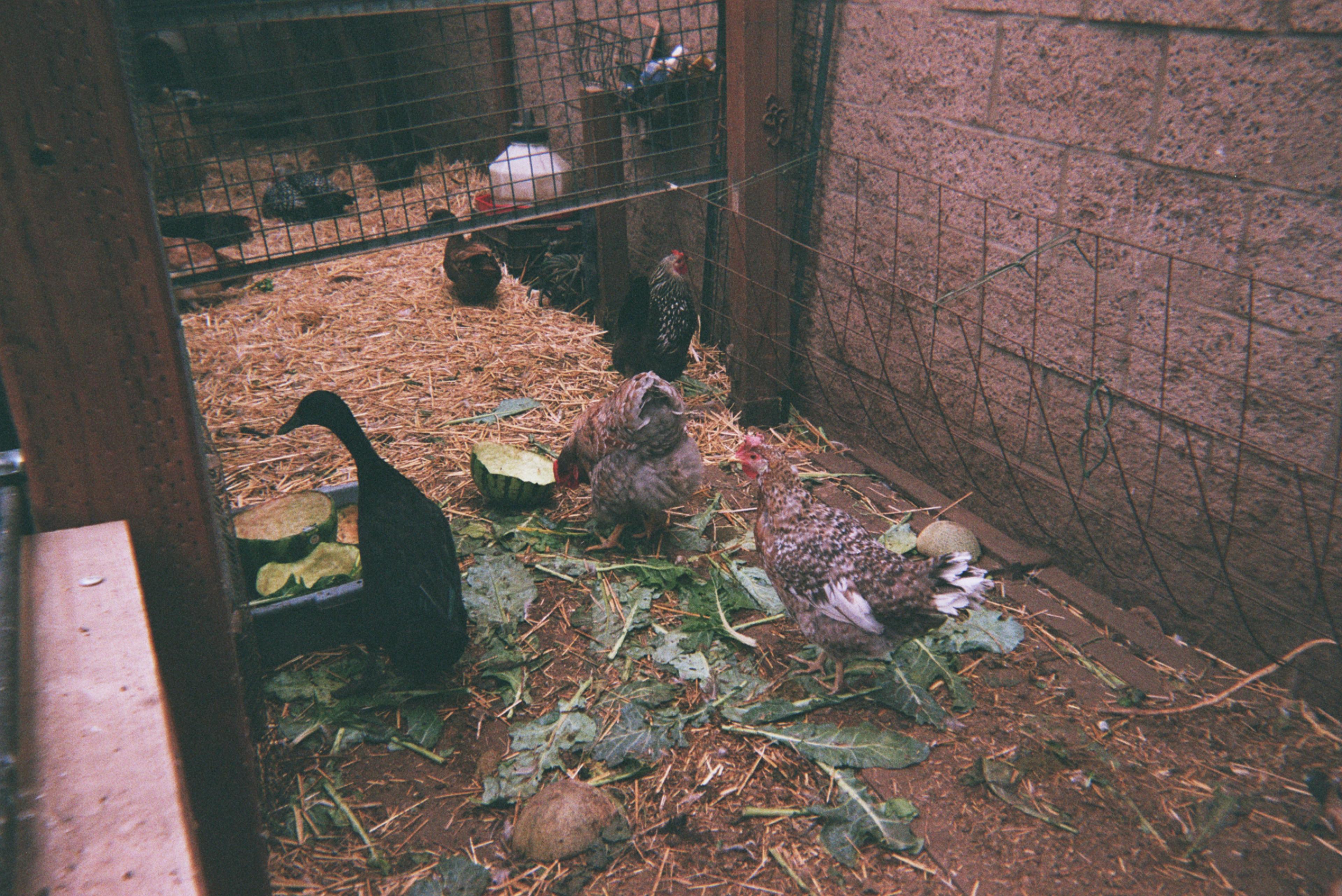
The Urban Homestead’s many diverse lines of business are what have kept the farm thriving—especially when the COVID-19 pandemic hit in the spring of 2021. When the lockdowns began, restaurants closed, caterers stopped calling, and school groups couldn’t visit. Justin shared that the Urban Homestead went from ten lines of business down to one: their farm box CSA program, “That CSA got us through COVID. . . In one week [it] went from 50 to 200 boxes.”
“That CSA got us through COVID. . . In one week [it] went from 50 to 200 boxes.”
The explosion in demand was welcome, but the farm was simply not built to send out that many produce boxes. The siblings sprung into action to reorganize their entire operation to meet the new demand: Justin contacted other local farmers from whom he could buy wholesale produce to include in the boxes, Anais did the work to migrate their CSA management software to better handle their increased orders, and Jordanne went searching for funding to help cover some of their new costs of doing business.
It was at this time that Jordanne found Ambrook, and Ambrook helped her successfully apply for the USDA’s Coronavirus Food Assistance Program (CFAP). Ambrook got the Urban Homestead enough money to invest in new flooring, shelves, and tables for a staging area that was essential to meet the overnight quadrupling of CSA orders.
“When I went to Ambrook I felt like someone was watching over me so I don’t get in trouble for saying the wrong thing. That gave me the security to be confident to submit [the application].”
Jordanne is no stranger to applying for grants and dealing with the USDA but has struggled in the past to get grantors to answer her questions or have time to help her. Ambrook’s hands-on approach made her feel comfortable and confident during the whole process. “When I went to Ambrook I felt like someone was watching over me so I don’t get in trouble for saying the wrong thing. That gave me the security to be confident to submit [the application].”
A year later, it’s clear that the Dervaes’s ingenuity and the financial infusion from CFAP turned a crisis into an opportunity — even as restaurants and caterers are reopening, the Urban Homestead’s CSA program is going stronger than it ever had been before the pandemic.
The Dervaes are proud of their work, not only because it kept their own farm operating but also because they were able to buoy other local farms through the crash of restaurant demand, employ delivery drivers, and feed their neighbors. Justin rocks back in his chair as he tells us “We could have just shut down, but we wanted to feed our community.”
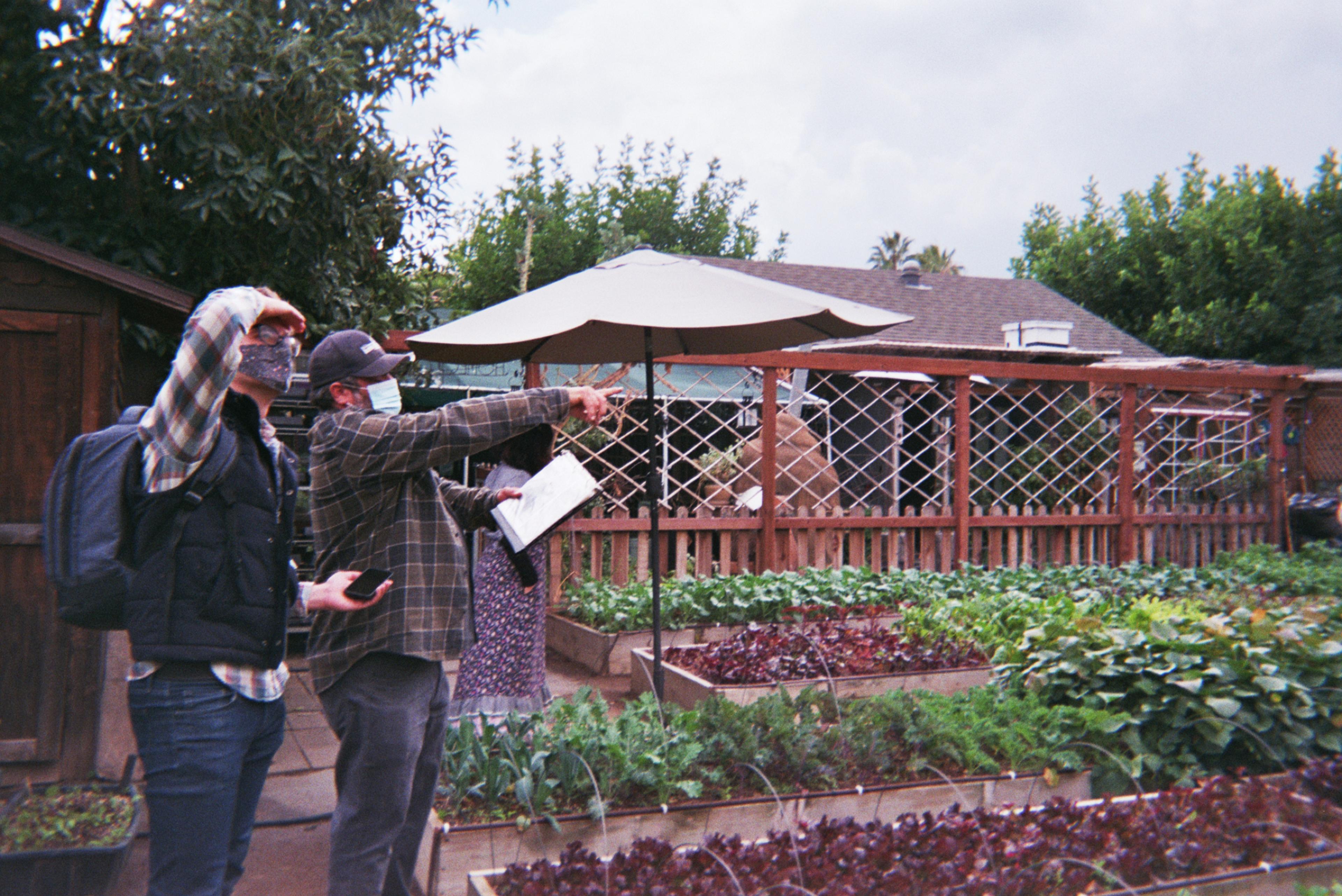
When the Ambrook team visited the Urban Homestead, we asked the Dervaes about what challenges they had managing the finances of their business. Bookkeeping and accounting were high on their list.
“We could have just shut down, but we wanted to feed our community.”
“When you’re a business person you have to wear many hats, and sometimes one hat gets put on crooked,” Jordanne said. When we asked about their financial recordkeeping last year, she continued, “During COVID, we were just getting products to people and we didn’t have time to know what was happening in the bank account.” Like most farmers we speak with, the Dervaes siblings got into farming because they love to grow things, love the animals, and love to feed their neighbors. They don’t love entering expenses and revenues into a spreadsheet each evening. During the pandemic, what manual tracking they were doing fell by the wayside in lieu of more pressing issues.
Justin has an uncanny grasp on the unit economics of his produce, and can rattle off his approximate costs to grow every one of the diverse plants on their farm. It’s this intuition that allows him to make good day-to-day operational decisions on the farm. However, they don’t have real time visibility into their farm’s overall profit and loss, making it more difficult to budget money for expansion or showcase their profitability to a potential lender.
We’re building Ambrook’s financial management tools for farms like the Urban Homestead, so they can focus more on the parts of farming they love. Farms can get Ambrook spending cards that keep their business expenses separate from their personal, and do their bookkeeping on the fly directly from their phone.
You can visit the Urban Homestead at their online storefront, or learn more about their educational programs from their non-profit foundation.
